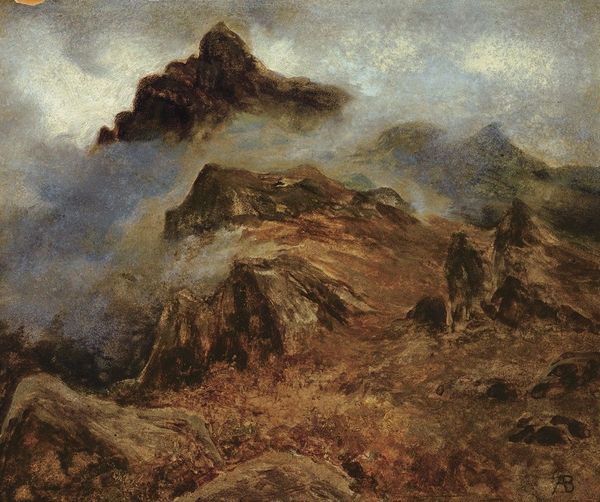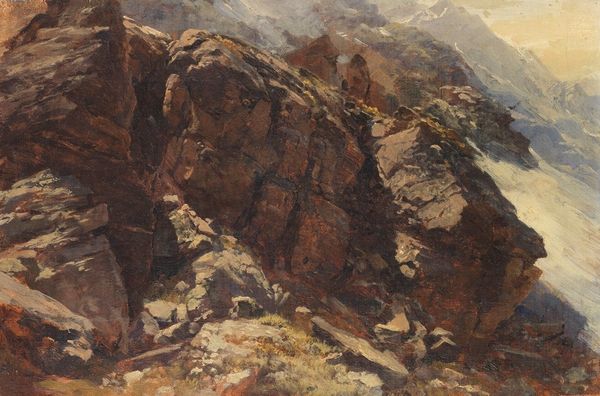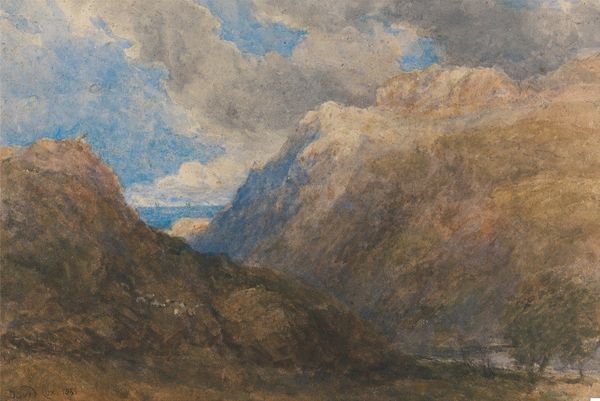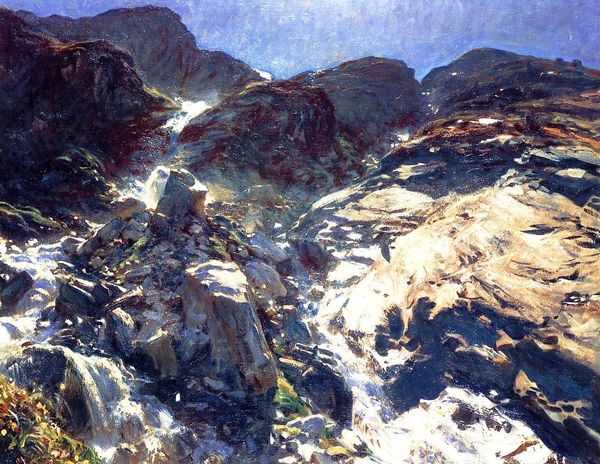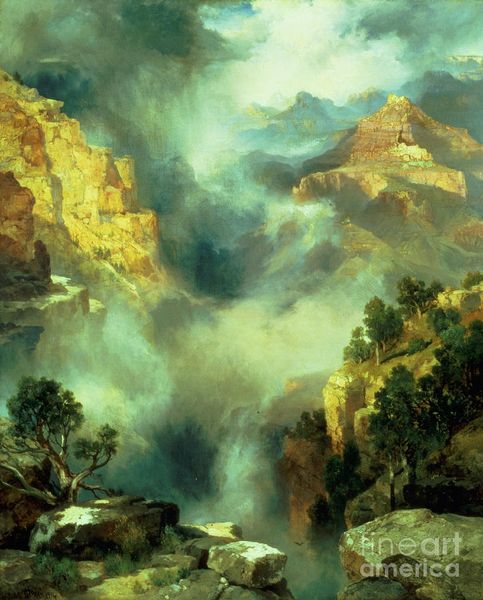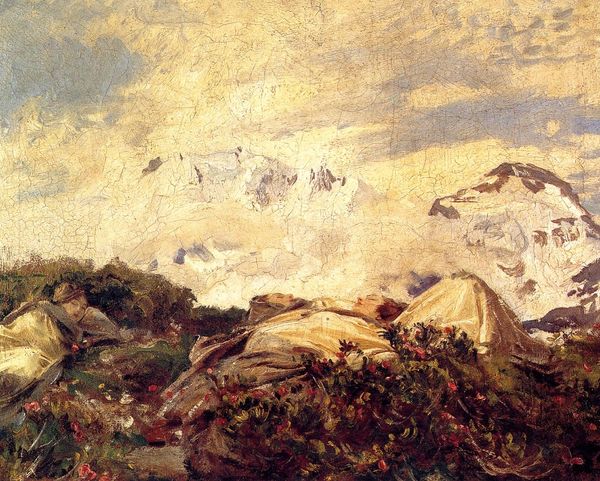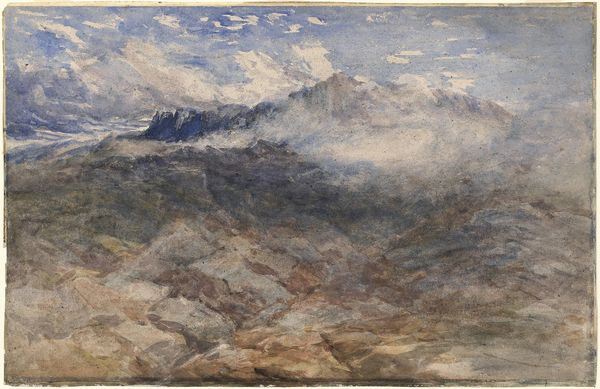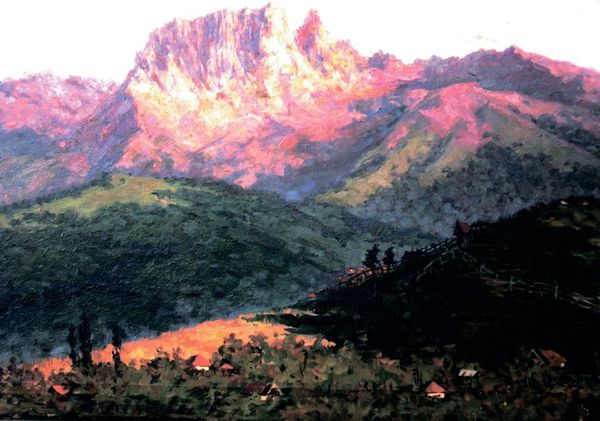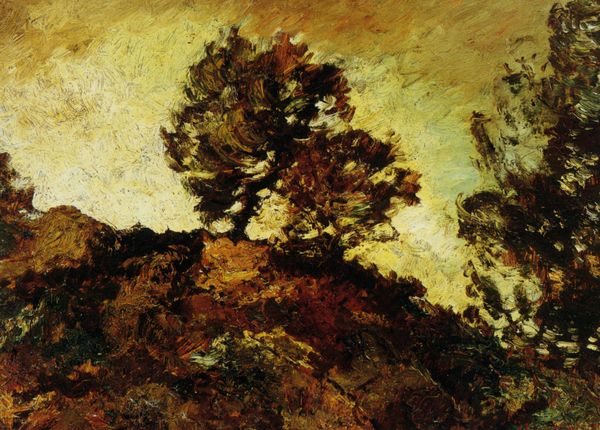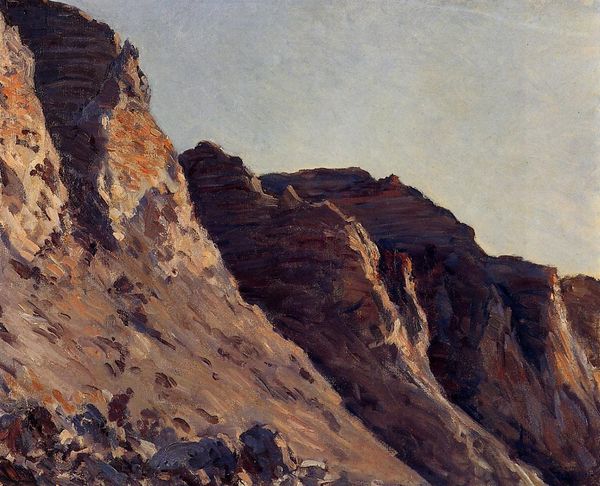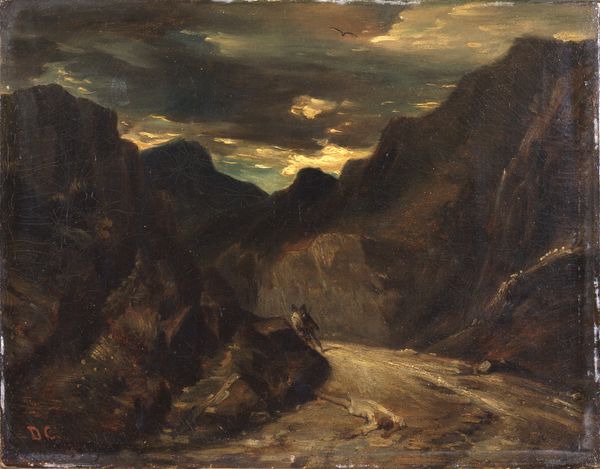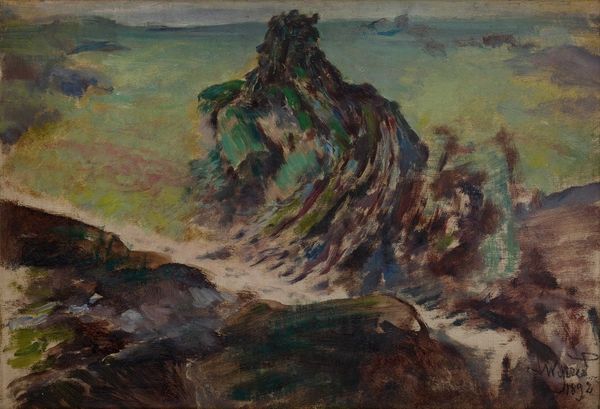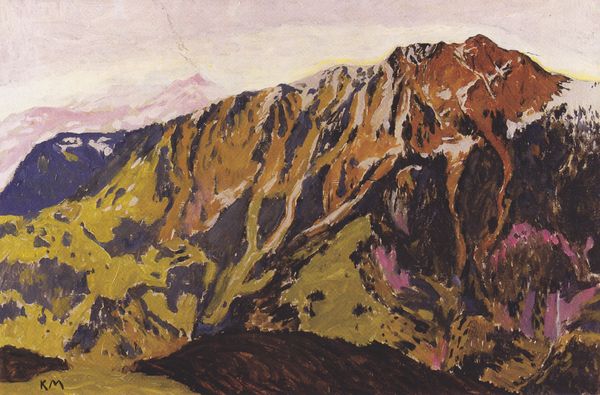
Dimensions: 90.17 x 93.98 cm
Copyright: Public domain
Curator: Here we have John Singer Sargent’s "Val D’Aosta, Purtud," painted in 1907. It’s currently held here at the Tate Britain. He captured it en plein air with oil on canvas. What strikes you most about this work? Editor: It feels elemental. Raw earth, rock, sky...a sense of geological time compressed into a single visual experience. It’s more monumental than scenic. Curator: Exactly. Sargent painted a similar view repeatedly, trying to distill the very essence of the alpine landscape. It echoes Romantic ideals of the sublime, that overwhelming encounter with nature. Notice how the dark foreground, littered with rocks, draws you toward the sunlit peaks. It almost mimics our mortal journey towards enlightenment. Editor: That’s interesting, how you relate the rocks to mortality. For me, it's about the tension between nature's indifferent power and humanity’s tiny existence within it. Did Sargent deliberately use such impasto to heighten the sense of weight, the sheer physical presence of the mountains? It feels like a social commentary too, the rise of industrialism overshadowed by the permanence of the land. Curator: It’s a compelling reading of the work, to think that he meant that, but Sargent wasn't overtly political in his landscapes. But his technique undeniably enhances the symbolic weight. Thick paint evokes geological textures, emphasizing permanence against fleeting impressions. Editor: Still, he chose this viewpoint and rendered it at the moment he did. One cannot help reading it into the art of this period when anxieties about the human toll of modernity were prevalent. Is the waterfall, reduced almost to a stroke of white, a sign of fragility set against the monumental strength of the rocks? Curator: Perhaps. Or, maybe it signals a place of life, even within this rocky terrain. A testament to persistence, renewal. Regardless of its literal reading, this painting remains captivating due to its raw immediacy and complex blend of sensory details and emotional depth. Editor: Indeed. Seeing how it fits within its historical and political climate brings additional nuance to appreciating its beauty, doesn't it?
Comments
No comments
Be the first to comment and join the conversation on the ultimate creative platform.
